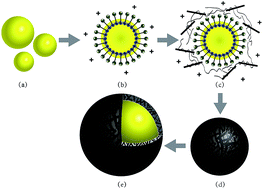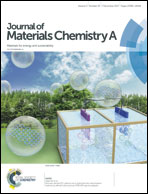Preparation and physicochemical properties of microcapsules containing phase-change material with graphene/organic hybrid structure shells
Abstract
Microcapsules containing phase-change materials (microPCMs) have received increasing attention in the field of latent thermal storage. The addition of graphene in the shells could be a promising approach to enhance the physicochemical properties of microPCMs because of its superior characteristics particularly the thermal conductivity. The aim of this study was to prepare and investigate the chemical microstructure and physicochemical properties of novel microPCMs with graphene/organic hybrid structure shells. Paraffin was used as a phase-change material, which was microencapsulated by graphene and methanol-modified melamine-formaldehyde (MMF) through an in situ polymerization. The mean size and shell thickness were analyzed. The scanning electron microscopy (SEM) results showed that the microPCMs were spherical particles and graphene enhanced the smoothness of the shell surface. The contents of graphene in the shells were analyzed using X-ray photoelectron spectroscopy (XPS); the microstructure of the shells was investigated by transmission electron microscopy (TEM) and atomic force microscopy (AFM). It was found that the shells had a graphene/organic hybrid structure, which was formed though the electric charge absorption and long-molecular entanglement. At the same time, the mechanical properties of the microcapsules were improved because of the graphene addition. Thermogravimetric analysis (TGA) tests showed that the microPCMs had a higher degradation temperature of 295 °C. In addition, graphene greatly enhanced the thermal stability of the microPCMs. The phase-change properties of the microPCMs were studied by differential scanning calorimetry (DSC) and thermal cycling tests. The results indicated that the phase-change temperature was regulated by the graphene addition and that graphene reduced the thermal barrier of the polymer shell material. The thermal conductivity of microPCMs with 1.0 wt% graphene was increased by about 100% compared to that of microPCMs without graphene. Moreover, the phase-change cycling tests implied that the microPCMs possessed a sensitivity response to heat because of the excellent thermal conductivity of graphene.



 Please wait while we load your content...
Please wait while we load your content...